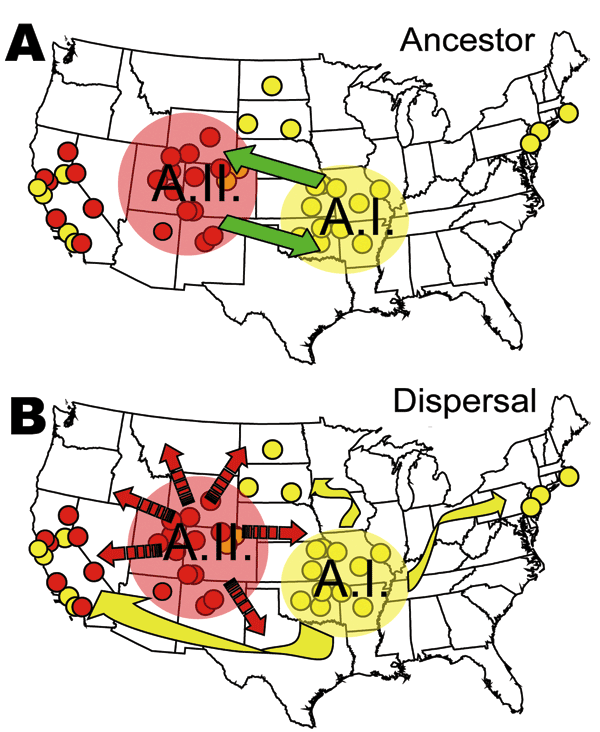Volume 11, Number 12—December 2005
Synopsis
Francisella tularensis in the United States
Figure 8

Figure 8. Genetic and spatial data of the A.I and A.II subpopulations of Francisella tularensis subsp. tularensis in the United States. A) Ancestral status of these 2 subpopulations is unclear; either could have founded the other, or a third unknown subpopulation could have been the ancestor. B) Highly restricted bacterial-endemic regions could now be breaking down because of human-mediated dispersal of the pathogen across the country. The small circles indicate the spatial distribution of the A.I and A.II isolates, as shown in Figure 6.
Page created: February 02, 2012
Page updated: February 02, 2012
Page reviewed: February 02, 2012
The conclusions, findings, and opinions expressed by authors contributing to this journal do not necessarily reflect the official position of the U.S. Department of Health and Human Services, the Public Health Service, the Centers for Disease Control and Prevention, or the authors' affiliated institutions. Use of trade names is for identification only and does not imply endorsement by any of the groups named above.